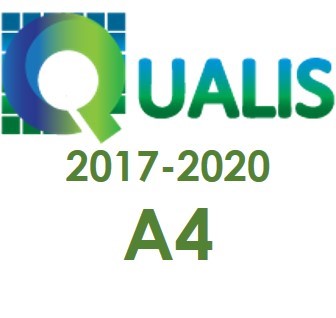Development of an automated star tracker system with assisted polar alignment for amateur astrophotography
Keywords:
Astrophotography. Polar Alignment. Star Tracking.Abstract
This article presents the development of an automated star tracking system and an auxiliary system to carry out the polar alignment, using sensors (bussole and accelerometer), control algorithms and the Arduino Uno microcontroller. The objective of this project is to increase the precision of the polar alignment of telescopes and a precise control of the speed of correction of the RA axis from telescope, allowing the capture of long-exposure photographs with the reduction of anomalies related to the apparent movement of stars. The system was tested in real conditions and demonstrated good results, making it possible to obtain clear photographs in exposures of up to 20 seconds.
Downloads
References
CELESTRON. Motor movimento telescópio Celestron montagem equatorial. Disponível em: https://www.celestron.com.br/MLB-1355171074-motor-movimiento-telescopio-celestron-montagem-equatorial-_JM?srsltid=AfmBOoq-hr6xJXPbCet_0iGeZDH9-B9BFrtfknX1VBEvsR1z30dxVc6_. Acesso em: 14 jan. 2025.
FORNAZIEIRO, Leandro. Alinhamento pelo método DRIFT (derivação). [S. l.], 23 dez. 2014. Disponível em: https://observatoriolupus.blogspot.com/2014/10/alinhamento-pelo-metodo-drift-derivacao.html. Acesso em: 5 nov. 2024.
GSpeed. AGotino: un goto con Arduino. Padova, Itália, 21 out. 2020. Disponível em: https://www.astronomia.com/forum/showthread.php?34605-aGotino-un-goto-con-Arduino. Acesso em: 3 set. 2024.
NATIONAL CENTERS FOR ENVIROMENTAL INFORMATIONS (EUA). NOAA (National Oceanic and Atmospheric Administration). Magnetic Field Calculators. [S. l.], 2024. Disponível em: https://www.ngdc.noaa.gov/geomag/calculators/magcalc.shtml?useFullSite=true. Acesso em: 20 set. 2024.
OBSERVATÓRIO PHOENIX (Belo Horizonte, MG, Brasil). Os sistemas de acompanhamento. Belo Horizonte, MG, 6 ago. 2003. Disponível em: https://www.observatorio-phoenix.org/n_telesc/24_N10.htm. Acesso em: 20 nov. 2024.
ORTIZ, Roberto. Conceitos básicos em astronomia de posição: Aprofundamento em Astronomia para a Docência Leitura semana 3: Astronomia de Posição e o fenômeno Dia-Noite. São Paulo, SP: Escola de Artes, Ciências e Humanidades da USP, ago. 2011. Disponível em: https://each.uspnet.usp.br/ortiz/classes/04-Leitura_Astronomia_de_posicao_Ortiz.pdf. Acesso em: 12 nov. 2024.
QST (Shanghai, China). 3-Axis Magnetic Sensor QMC5883L. Shangai, China: [s. n.], 2016.
ROBINSON, Steven. Deep Sky Astrophotography: Shooting. Perthshire, Escócia, 2 ago. 2024. Disponível em: https://www.stevenrobinsonpictures.com/deep-sky-astro-shooting-tutorial. Acesso em: 13 nov. 2024.
SOBRINHO, Laurindo. Como alinhar um telescópio equatorial?: Como devo interpretar os discos de AR e DEC? Ao apontar para o horizonte que hora deverá marcar o disco AR?. Madeira, Portugal, 6 jul. 2011. Disponível em: https://observatoriolupus.blogspot.com/2014/10/alinhamento-pelo-metodo-drift-derivacao.html. Acesso em: 11 out. 2024.
Downloads
Published
How to Cite
Issue
Section
License
Copyright (c) 2025 Revista Brasileira de Iniciação Científica

This work is licensed under a Creative Commons Attribution-NonCommercial-ShareAlike 4.0 International License.




